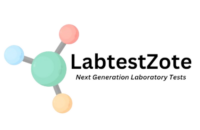Drug use in educational institutions is a growing public health and societal concern in Kenya. The National Authority for the Campaign Against Alcohol and Drug Abuse (NACADA) has emphasized the need for comprehensive strategies to prevent and mitigate drug use among learners. This article explores how schools and colleges can integrate drug testing into their broader drug abuse interventions, aligning with NACADA guidelines.
Table of Contents
Understanding the Problem
Drug use in schools is a significant issue, with a National Survey on the Status of Alcohol and Drug Abuse among Secondary School Students in Kenya showing that 3.8% of students currently use alcohol, 3.6% use prescription drugs, and 2.6% use miraa[1].
The common sources of drugs and substances of abuse mentioned by students include kiosks or shops near school, bars near school, friends, and school workers[1]. Furthermore, a study by Maingi (2018) revealed that 59% of teachers use alcohol, with those of lower levels of education being more affected[1].
Related: Drugs Of AbuseTesting In Kenya
NACADA Guidelines
NACADA has developed comprehensive guidelines for alcohol and substance use prevention and management in basic education institutions. These guidelines emphasize the importance of a multi-faceted approach that includes preventive education, incident management, and reporting mechanisms[1]. The guidelines also highlight the need for schools to assume a primary role in substance use prevention, given that children spend most of their time in school[1].
Integrating Drug Testing
While drug testing can be a useful tool in identifying drug use, it should be part of a comprehensive intervention program rather than a sole solution. NACADA emphasizes that drug testing should be conducted within licensed and accredited facilities and that the window of detection varies among drugs, making it possible for some substances not to show up during testing[4]. Additionally, a negative test result does not necessarily mean that the student is not using drugs or alcohol[4].
Alternative Approaches
Instead of relying solely on drug testing, schools and colleges can adopt alternative strategies that focus on prevention and support. These include:
- Guidance and Counselling: Offering guidance and counselling to students suspected of drug abuse can help identify the reasons behind their drug use and the duration they have consumed drugs. This information can inform a safe and healthy reactive approach to the problem[2].
- Building Positive Relations: Fostering positive relationships between teachers and students can help address the underlying issues that may lead to drug use. This can involve identifying and addressing problems such as bullying, which can contribute to indiscipline in schools[3].
- National Guidelines: Implementing NACADA’s guidelines for alcohol and substance use prevention and management can provide a comprehensive evidence-based approach to addressing drug use in schools[1].
Conclusion
Drug use in educational institutions is a complex issue that requires a multifaceted approach. While drug testing can be a useful tool, it should be part of a broader intervention strategy that includes preventive education, incident management, and reporting mechanisms.
Schools and colleges in Kenya can integrate drug testing into their interventions by adopting alternative approaches that focus on prevention and support, such as guidance and counselling, building positive relations, and implementing NACADA guidelines.
By taking a comprehensive and evidence-based approach, schools can effectively address drug use and promote a healthy learning environment for their students.
References
- Substance Use Prevention and Management in Basic Education Institutions [NACADA]
- Testing in Schools Won’t Stop Drug Use [Nation]
- Mandatory Drug Testing Is Illegal [Citizen Digital]
- NACADA-No Law requires schools to test students for drug use [standard Media]
Related Tests in This Post
-
Drugs of Abuse Test -10 Panel Urine TestOriginal price was: KSh6,900.KSh5,900Current price is: KSh5,900.
Disclaimer
The information provided on this medical blog is for general informational purposes only and should not be considered as a substitute for professional medical advice. Always consult with a qualified healthcare provider before making any healthcare decisions or taking any actions based on the information provided on this blog. The authors and publishers of this blog are not liable for any errors or omissions in the content or for any actions taken based on the information provided.
